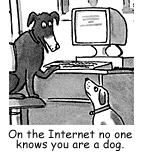October 2000
Volume 4, Issue 1
Inside this Issue...
Microsoft Software Now Available for Home Use
Wheelchair Accessible Computer Desks
The DRL – Your Source for Stats
Social Science Computing Laboratory
Faculty of Social Science
Room 1228, Social Science Centre
The University of Western Ontario
London, Ontario, Canada, N6A 5C2
E-mail: ssts@uwo.ca
Web: www.ssc.uwo.ca
Phone: 519 661-2152
Managing Editor: Ramona
Fudge
SSC Network Update
Microsoft Word Macro Viruses
Bill Dowhaniuk
The SSCL collects statistics on virus infections of Social Science Centre computers and the results are quite revealing. Out of 2385 known infections from January to August 2000, 2254 were Microsoft Word Macro viruses, accounting for 94.5% of the total infections.
What are Microsoft Word Macro Viruses?
 Simply put, these viruses are written in a macro language such as Visual Basic for Application (VBA), or Microsoft Script, that Microsoft Word can execute. Over the years these languages have advanced dramatically in what they can do and, as a result, so have the viruses.
Simply put, these viruses are written in a macro language such as Visual Basic for Application (VBA), or Microsoft Script, that Microsoft Word can execute. Over the years these languages have advanced dramatically in what they can do and, as a result, so have the viruses.
How does your computer become infected?
The usual method for infections comes when you open an infected Word document and the macro runs without your knowledge. The infected document may have been sent to you as an E-mail attachment from a colleague, friend, or classmate. The sender may not have even intended to send you the document. Many viruses themselves will scan through a person's address book and E-mail itself to each person in the book.
Three easy ways to help prevent infections:
- Turn on the macro virus protection. Inside Word 97 select Tools > Options. Pick the General tab. Ensure the check mark beside "Macro Virus Protection" is present.
- Use common sense:
- Never open an attachment without first saving it as a file and scanning it with a virus scanner.
- If it looks suspicious in any way - call the sender to ensure he/she sent you the document. If you cannot reach the sender by phone, send an E-mail reply asking for confirmation.
- If it looks suspicious and was unsolicited, delete it.
- Keep your virus scanning software and virus signature files current. Virus signature files are updated weekly on the SSC Network. To update your computer virus signature files just perform the following
steps:
Start Þ Programs Þ McAfee VirusScan Þ McAfee VirusScan Scheduler
Double click on the AutoUpdate event (gas pump icon), then click Run Now. If your virus scan files are updated, please reboot your machine.